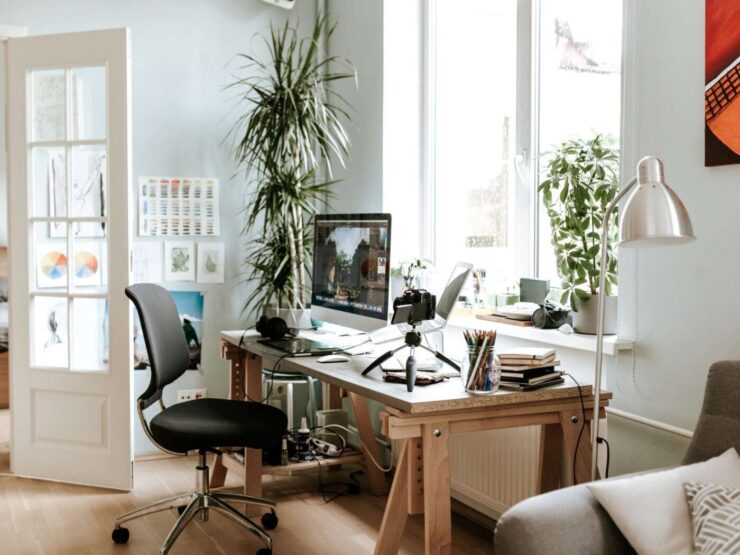Whether you’re setting up a home office or working in a corporate setting, office furniture placement is an essential aspect of creating a productive workspace. Proper placement of furniture not only maximizes the available area but also creates balance, making it easier to focus and get work done. Here are some tips to help you optimize your office furniture placement.
Assess the Available Space
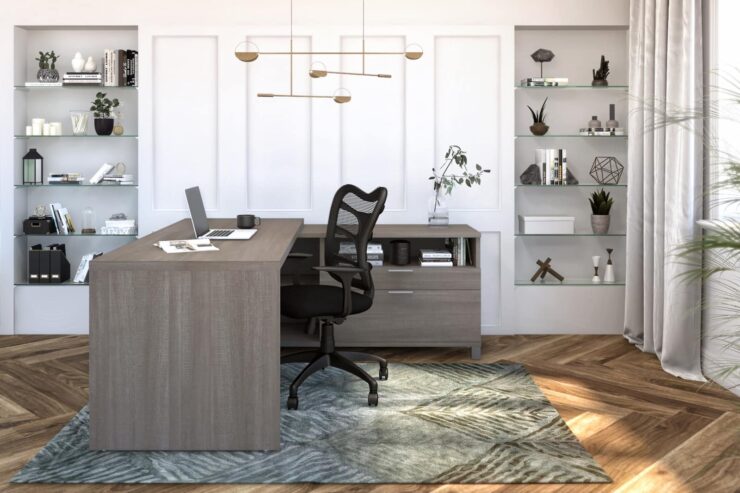
Before you start moving office furniture around, assess the available space. Determine the size and shape of your office and take measurements to help you decide what furniture to include and how much space to allocate for each item.
Plan the Layout
Once you have assessed the room, plan the layout of your office. Consider the flow of traffic, natural light sources, and the placement of electrical outlets. Decide where to place your desk, office chair, filing cabinets, bookshelves, and any other furniture.
Deciding What Furniture to Include
Deciding what furniture to include is a critical step in effective office furniture placement. It involves taking into account your work requirements, available space, and personal preferences. Your desk and chair are the most important pieces of furniture, as they are the primary tools for your work. You also need to consider storage furniture such as cabinets and bookshelves to keep your workspace organized and clutter-free. However, it’s important to avoid overcrowding your workspace with unnecessary furniture as it can make the room feel cramped and disorganized. When selecting furniture, consider the style, material, and durability to ensure it fits your preferences and will last long. Ultimately, careful consideration of your specific needs will help you select the furniture that will maximize your productivity and comfort in your workspace.
Prioritize Functionality
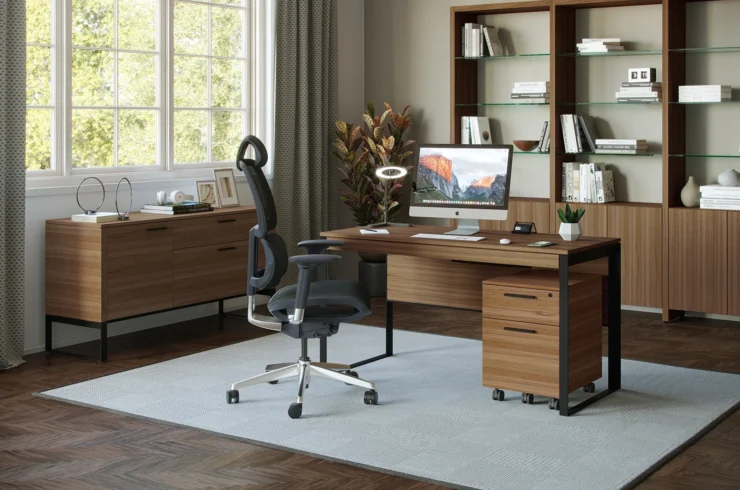
When arranging your furniture, prioritize functionality. Make sure that your desk and office chair are easily accessible and comfortable to use. Position your computer monitor at eye level and at a distance that doesn’t strain your eyes. Keep frequently used items within arm’s reach, and reserve the more distant areas for less frequently used items.
Keeping Frequently Used Items within Arm’s Reach
Keeping frequently used items within arm’s reach is an essential aspect of effective office furniture placement. It not only saves time but also reduces the risk of injury from repetitive reaching and stretching. By placing frequently used items such as pens, papers, and files within arm’s reach, you can easily access them without interrupting your workflow. This helps to improve productivity and efficiency while reducing the risk of distraction. Furthermore, keeping frequently used items close by helps to create a sense of organization and order, making it easier to find what you need when you need it. Overall, keeping frequently used items within arm’s reach is a simple yet effective strategy for optimizing your workspace.
Create Zones
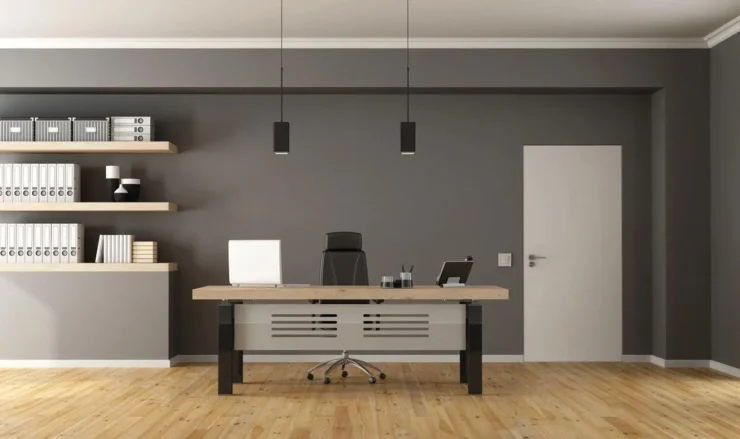
Creating zones in your office helps to establish a sense of organization and balance. Divide your office into zones for work, storage, and leisure. Use furniture placement to clearly define each zone, making it easier to transition between different tasks throughout the day.
Use Color and Texture
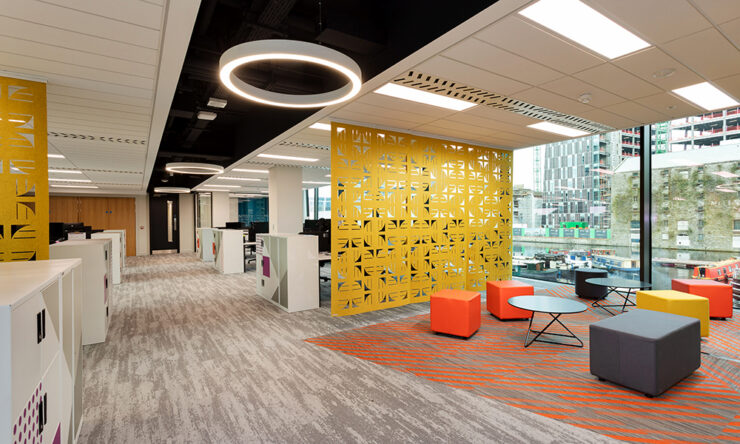
Use color and texture to create a cohesive and balanced workspace. Choose furniture and decor that complement each other in terms of color, texture, and style. Use color accents to draw attention to specific areas, such as your desk or a focal point in the room.
Using Color Accents to Draw Attention to Specific Areas
Using color accents to draw attention to specific areas is an effective way to create visual interest and increase productivity in the workspace. A pop of color can help draw the eye to important areas such as your desk, a bulletin board, or a focal point in the room. Additionally, using color accents can help create a cohesive and balanced workspace by coordinating with the colors of your furniture and decor. When choosing color accents, it’s important to consider the mood you want to create in your workspace. Warm colors such as red and orange can create energy, while cool colors such as blue and green can create a calming effect. Ultimately, using color accents is an easy and effective way to improve your workspace and promote productivity.
Creating a Cohesive and Balanced Workspace
Creating a cohesive and balanced workspace is crucial for promoting productivity and reducing stress. To achieve this, it’s important to choose furniture and decor that complement each other in terms of color, texture, and style. This creates a cohesive look and feel in the workspace. Additionally, using color accents can help draw attention to specific areas, such as your desk or a focal point in the room. Balance can be achieved by ensuring that furniture is arranged in a way that doesn’t create visual clutter or a sense of chaos. Proper furniture placement also ensures that essential items are easily accessible, allowing you to work efficiently. Ultimately, creating a cohesive and balanced workspace promotes calm and focus, making it easier to concentrate and complete tasks.
Consider Ergonomics

Ergonomics refers to the design of furniture and equipment that promotes comfort and reduces the risk of injury or strain. When placing your office furniture, consider ergonomics to minimize the risk of discomfort or injury. Make sure your office chair is adjustable and provides adequate support for your back, neck, and arms.
Maintain Order and Cleanliness
Once you have arranged your office furniture, maintain order and cleanliness. Regularly declutter your workspace and avoid overcrowding your desk or storage areas. Keep your office clean and well-organized to minimize distractions and create a calm and focused environment.
Keeping the Office Clean and Well-Organized
Keeping the office clean and well-organized is essential for promoting productivity and reducing stress. A cluttered workspace can cause distractions, making it difficult to concentrate and complete tasks. To keep the office clean and well-organized, it’s important to declutter regularly and avoid overcrowding your desk or storage areas. Use filing cabinets, bookshelves, and other storage solutions to keep your workspace organized and easy to navigate. Additionally, regularly disinfecting your workspace can help maintain a healthy environment and prevent the spread of germs. Keeping your office clean and well-organized also promotes a sense of professionalism, which can positively impact your work and interactions with colleagues and clients. Overall, maintaining a clean and well-organized workspace helps create a calm and focused environment, promoting productivity and overall wellbeing.
Conclusion

In conclusion, office furniture placement is a crucial aspect of creating a productive and balanced workspace. By assessing your available space, planning the layout, prioritizing functionality, creating zones, using color and texture, considering ergonomics, and maintaining order and cleanliness, you can maximize your space and create a workspace that is comfortable, functional, and conducive to productivity.

